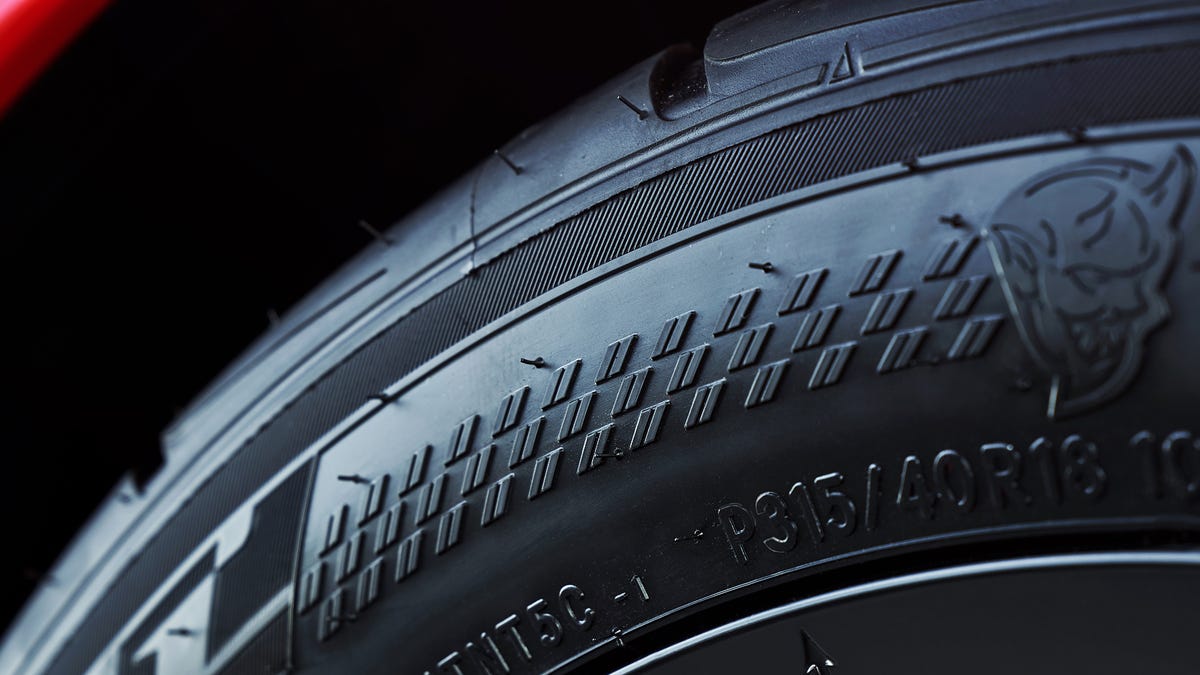Dodge Challenger SRT Demon strips down to its single-seat skivvies
The extreme diet includes removing rear and passenger seats and most sound deadening. That adds up to a 215-pound weight loss.

Dodge's hotly awaited Challenger SRT Demon will be a "monoposto." That's an Italian term for "single seater," and is usually a descriptor reserved for dedicated race cars.
We still don't know exactly what Fiat Chrysler has up its sleeve for this most sinister of muscle coupes, but it's now known that the Demon's recently revealed 200-pound weight loss is in fact around 215. And judging by the laundry list of weight-saving components listed below, it's also clear that Dodge has gone through the entire car looking for expendable grams in an effort to get the lead out. This is no comfortable cruiser. It's going to be a very serious, very focused, high-performance machine.
Flared arches and 18x11-inch drag radials mean business.
Here's a list of changes to the SRT Demon and how much weight each component change saves:
- 58 pounds: Deleted front passenger seat and seatbelt
- 55 pounds: Deleted rear bench seat
- 24 pounds: Deleted audio speakers except front door speakers (2)
- 20 pounds: Deleted spare tire/wheel and trunk liner
- 19 pounds: Small-diameter hollow sway bars (front goes from 34 mm solid to 29 mm hollow; rear goes from 22 mm solid to 19 mm hollow)
- 18 pounds: Deleted 23 different NVH components (think: insulation)
- 16 pounds: 18x11-inch aluminum wheels + long wheel studs and open lug nuts (2017 Hellcat Challengers have 20x9.5-inch units). Tires are Nitto drag radials
- 16 pounds: Lightweight aluminum brakes by Brembo: two-piece, four-piston units with discs moving from 390 mm diameter to 360 mm
- 4 pounds: Deleted power steering column in favor of a manual tilt/telescope wheel
- 2 pounds: Deleted parking sensors
If you've added all that up in your head, you'll come to 232 pounds. But this model's Demonic transformation also includes some additional components (including those pronounced fender flares) that add back 17 pounds, so figure on a 215-pound weight savings over a Hellcat.
It'll be interesting to see what -- if any -- components Dodge makes available for customers to add back into their vehicle come ordering time. Automakers like Porsche have made a profitable art out of creating more expensive stripped-out track specials to enable headline-worthy 0-60 times and top speeds, only to charge customers to effectively reinstall deleted components like air conditioning and stereo systems in order to make such cars more usable in the real world. Will the SRT Demon follow suit?
Dodge still isn't saying what powers this latest SRT, nor has it released any performance metrics. Hopefully it'll disclose more this April, when the Demon terrorizes the New York Auto Show.

